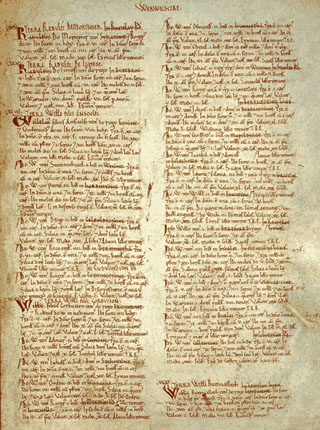What You Need to Know:
• It is incorrect to think that no censuses were conducted in England prior to 1801. In fact, English censuses go back as far as 1086 when William the Conqueror ordered the production of the Doomsday Book. Most early population censuses prior to 1801 however were done strictly for the purposes of taxation and the assessment of military strength. Personal information was rarely recorded (or if it was, the record usually has not survived to the present). From a genealogical perspective, a census is only useful if it records personal information and this information has been retained to the present.

• The first four national censuses (1801, 1811, 1821 and 1831) were simple head counts and did not usually provide any kind of personal information.
• The actual census returns themselves from these first four censuses were destroyed after the main census books were completed. Therefore, there is no value in trying to track down the original record for translation errors or to see whether a particular enumerator in a particular district might have recorded additional information.
• The government had actually made attempts prior to 1801 to conduct national censuses but these had generally failed due to religious and libertarian opposition. The general population was deeply suspicious of the government’s intentions for collecting personal information (with good reason since previous censuses were for taxation or military enlistment purposes). Even as late as the 1841 census, some enumerators required police protection to complete their task.
What You Need to Know:
• Prior to 1813 there was no standardized form for baptism records. The earliest baptism records often only listed the name of the child. Sometimes, the name of the father would appear, and possibly even the name of the mother. Occasionally, the name of the township would be listed, which was an important consideration in large parishes, particularly in northern England.
• Unfortunately, the quality of parish records would sometimes regress in some regions prior to 1813 depending on the quality and interest of the local clergy. In general, the standard of parish records in any given time period prior to 1813 was dependant on the interest and directives of the Archbishop for the region.
• Illegitimate children born prior to 1813 would sometimes only have the name of the mother listed. Often, other identifiers were included for illegitimate children even if the father was listed. Common identifiers for illegitimate children included such things as the letter ‘B’ next to the record or a term in the margin such as base, bastard, chanceling, dratsab, illegal, lamebegot, merrybegot, nothus, spuriosus, scapebegot or viciatus.
• The level of illegitimacy in English society is estimated to have stayed fairly constant in the range of 5 to 7% from the 1600s until the 1900s. Although this might seem like a low number, statistically it means that about 1 in 20 of all ancestors were illegitimate.
• It can be a real challenge to track down where an old parish is located. England had at one time over 15,000 parishes. Fortunately, there are two online tools that can help you with this task. Genuki maintains a free historic church locator database. [Historic UK Church Locator]. As well, the Bennett family website kindly provides a freeware software program for Windows to help users locate historic UK parishes. [Historic UK Parish Locator]
• Although Wales is sometimes regarded as a predominantly nonconformist country, the truth is that well into the 1800s the vast majority of the Welsh population remained Anglican. Therefore, you should be able to find your Welsh ancestor’s baptism, marriage and deaths in Anglican parish records.
• The National Library of Wales maintains an online collection of historic Welsh genealogy records, including parish records (conformist and nonconformist), wills and pedigree books. [National Library of Wales Genealogy Records]

